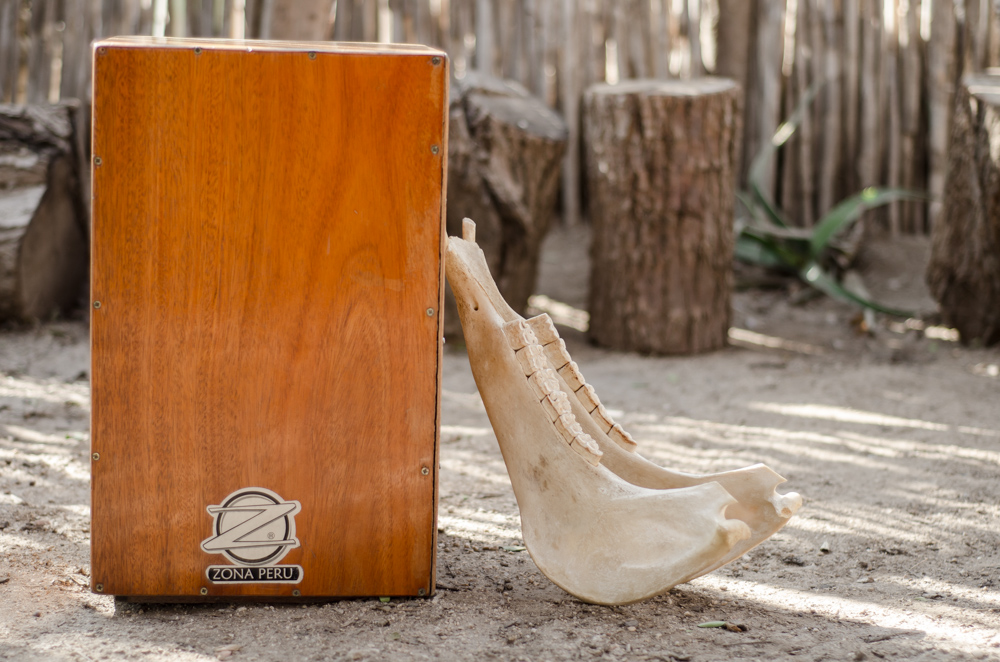
Afro-Peruvian music has a large repertoire inherited from the popular Afro-descendant culture that was mostly collected by Limean folklore specialists of the 1950s and 1960s, who also reestablished a musical canon. It is now a wide musical field with several emblematic styles (festejo, landó, tondero, etc.), ever more open to experimentation and fusion.
We have deliberately chosen to evoke this music and this culture through its instruments. The cajón, the quijada, and the checo are the true protagonists of Ritmos Negros del Perú.
The cajón is now a global instrument. Percussionists, who often praised its easiness to transport, its seeming simplicity, and the diversity of its sounds, have been integrating it to a vast array of musical styles. But “the cajón is Peruvian”, we are told, and that it ought to be better known! For some musicians, the Peruvian – and even more so Afro-Peruvian – roots of the cajón have been obscured by its appropriation by flamenco. Paco the Lucia, a famous Spanish guitarist, included the cajón in his music after a 1977 tour in Peru, where he was given his first cajón by Caitro Soto (the composer of Toro Mata, heard in the closing credits). The cajón is without a doubt a true cultural symbol in Peru: there’s a whole festival (created by Rafael Santa Cruz) dedicated to the instrument and, in 2007, the cajón was proclaimed part of the National Cultural Heritage.
The quijada and the cajita have benefited from a similar movement. Cajón, cajita, and quijada are the trinity of the Afro-Peruvian instrumentation. Combined with Afro-Cuban percussions (congas, bongos, and bells), they form a rhythmic base for guitar and vocal melodies, bass guitar lines, and pianos and choirs.
What strikes the most is the fabrication of these instruments from salvaged objects (donkey jaws, church money-boxes, grain containers…), as do the sounds and energies resulting from their combination.
The movie deliberately opens with the very specific experience of the Zaña Afro-Peruvian Museum. There, lost Afro-Peruvian instruments were reconstructed using 19th century drawings. In collaboration with the museum, we were able to capture the talent of Zaña youths by recordings demonstrations of each of these instruments.